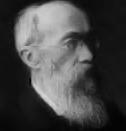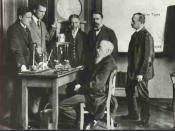Cathia A. Scicluna 1.10 24.10.14
Assignment: write at least 250 words on structuralism and functionalism
Structuralism and Functionalism
Psychology is a relatively new science, its first experimental laboratories being built in the late 19th century, Wilhelm Wundt being one of the first to establish his experimental laboratories in 1879. Thus the fist schools of thought debated over how the human mind and behaviour should be described. Structuralism and functionalism where such 2 primitive schools of thought that looked upon the human behaviour from 2 completely different perspectives.
The first school of thought was that of Structuralism, founded by Edward Bradford Titchener. Although Titchener was one of Wundt's students he broke away from many of what Wundt established. The aim of this school of thought was that of identifying the components of the mind and the way they interacted with each other. Structuralists believed that the goal of psychology was to study mind and consciousness as well as to find the relationship between the conscious experience and the physical process involved.
Titchener theorised that conscious experiences can be broken down into basic conscious elements that could then be used to explain all kinds of behaviour. Structuralists believed that our sensations to everyday stimuli are the basic elements of consciousness, for example, if the stimulus is taste, the elements would be sweet, sour, bitter or salts. This led Titchener to developed the method of introspection to analyse these basic elements where the patient would 'look within' his/herself and try to describe his/her memory, perception (i.e. feelings and sensation), cognitive processes (such as images and emotions) and motivations about a certain stimulus, in short, the patient would analyse his/her own thoughts. In fact, in the first psychology laboratories, participants were exposed to a stimulus (such as light, sound and taste) and then...


